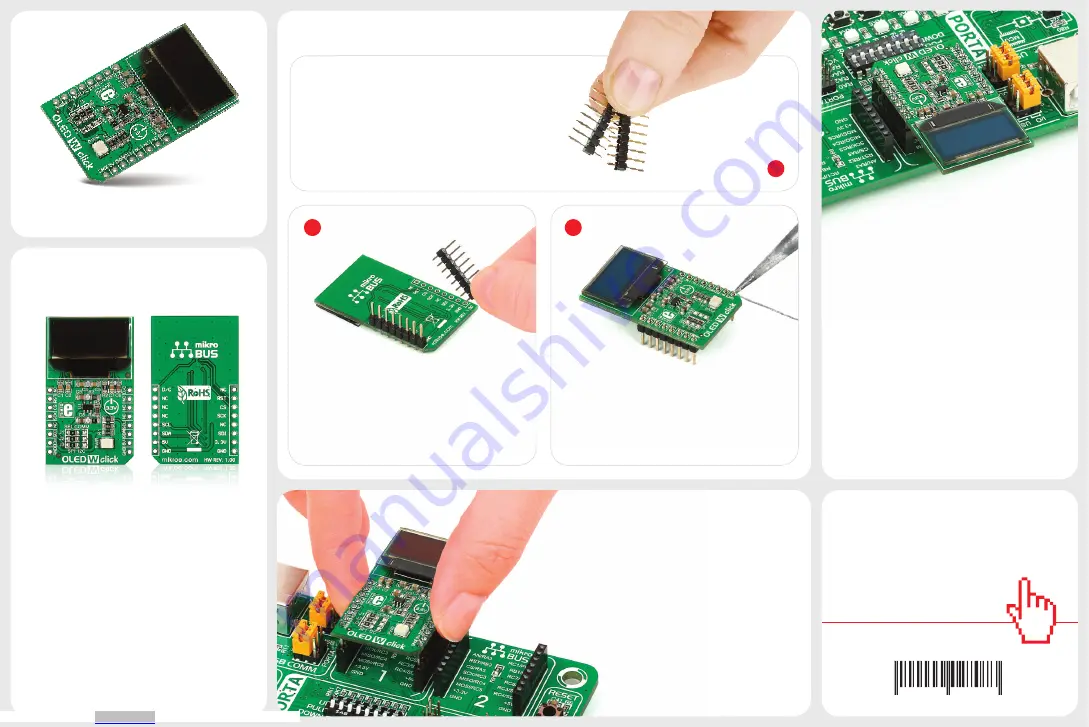
2
3
OLED W click Manual v100
0 100000 027073
click
™
BOARD
www.mikroe.com
2. Soldering the headers
1. Introduction
3. Plugging the board in
Once you have soldered the headers your
board is ready to be placed into the desired
mikroBUS
™
socket. Make sure to align the
cut in the lower-right part of the board with
the markings on the silkscreen at the
mikroBUS
™
socket. If all the pins
are aligned correctly, push the
board all the way into the socket.
Turn the board upward again. Make sure
to align the headers so that they are
perpendicular to the board, then solder
the pins carefully.
Turn the board upside down so that
the bottom side is facing you upwards.
Place shorter pins of the header into the
appropriate soldering pads.
Before using your click
™
board, make sure
to solder 1x8 male headers to both left
and right side of the board. Two 1x8 male
headers are included with the board in
the package.
4. Essential features
1
OLED displays are made from a thin film of
organic compound that emits light when
exposed to a current. Small monochrome
displays like these are ideal for displaying
text or icons. They are bright, have a wide
viewing angle and low power consumption.
The display on OLED W click
™
is 19.3 x 7.8mm
with a 96 x 39px resolution. The SSD1306
controller has built-in functionalities like
contrast control, normal or inverse image
display, vertical and horizontal scrolling
functions and many more.
OLED W
click
™
OLED W click
™
lets you add a small but bright
and crisp display to your design. It carries
a white monochrome passive matrix OLED
display and a
SSD1306
IC to control it. OLED
W click
™
can communicate with the target
board either through SPI or I
2
C interfaces.
mikroBUS
™
lines used for SPI are CS, SCK,
and MOSI (SDI); I
2
C output uses SCL and SDA
lines; also, both modes use PWM (A/C) and
RST lines. You select between SPI and I
2
C
outputs by resoldering three jumpers. OLED
W click
™
uses a 3.3V power supply.
Downloaded from




















